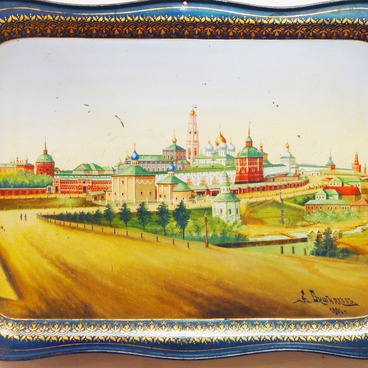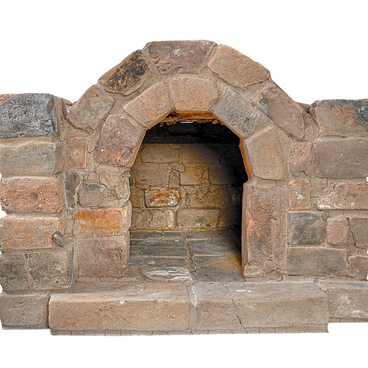The bear pendant was discovered in 1987 during an archaeological inspection of the Radonezh settlement in the mound near the grave in the northwestern part of the monument. This pendant belongs to the Finno-Ugric antiquities — it was part of a “rattling” bronze decoration. Finno-Ugric tribes considered such ornaments to be protective amulets: when moving, they made a ringing sound thereby driving away “evil spirits”. Archaeologists note that the bronze casting of the ancient Finno-Ugrians in the 5th -10th centuries is unusual because it was made by women. Firstly, they were the ones who wore a lot of “rattling” bronze, and they had to make it for themselves. Secondly, women’s bronze-casting was developed within the household — it was melted and cast directly in dwellings, on household hearths where food was cooked. Here, the housewives molded and fired ceramics, including tools of foundry work: small ladles for casting — “ljachki”, molds for casting — crucibles.
The best jewelry was made using the “wax model” method. The pendant was first molded from wax, then the model was sealed in clay, and then it was burned through the holes left (“litniki”), filling the emptied cavity with molten bronze. Casting on the “wax model” was practised by women up to the 11th century, which is confirmed by the finds in numerous burial grounds of Volga Finns-Meri, Muroma, Mari and Mordvins. There are burials of female foundries with crucibles, ladles and molds.
Images of bears were found in the art of different regions of Russia. In the Urals, for example, bears were painted as early as in the Stone Age. That was when the composition was formed: the skin of a bear with solar signs engraved — signs of the sun. The bear was depicted in a sacrificial pose: the animal’s head was between his forepaws. The pendant symbolized a bear skin on a raised platform, bells were attached to the lintels between the paws.
Among the peoples of the Kola Peninsula, the sun god Peiwe rode across the sky on this animal. The sunny nature of the bear was emphasized by round stamps radiating from the middle of the back. These same peoples may have used bear pendants as part of “proniz”, large beads that hung from a woman’s belt. It was believed that the ringing of bells not only scared away evil spirits, but also attracted suiters.
The best jewelry was made using the “wax model” method. The pendant was first molded from wax, then the model was sealed in clay, and then it was burned through the holes left (“litniki”), filling the emptied cavity with molten bronze. Casting on the “wax model” was practised by women up to the 11th century, which is confirmed by the finds in numerous burial grounds of Volga Finns-Meri, Muroma, Mari and Mordvins. There are burials of female foundries with crucibles, ladles and molds.
Images of bears were found in the art of different regions of Russia. In the Urals, for example, bears were painted as early as in the Stone Age. That was when the composition was formed: the skin of a bear with solar signs engraved — signs of the sun. The bear was depicted in a sacrificial pose: the animal’s head was between his forepaws. The pendant symbolized a bear skin on a raised platform, bells were attached to the lintels between the paws.
Among the peoples of the Kola Peninsula, the sun god Peiwe rode across the sky on this animal. The sunny nature of the bear was emphasized by round stamps radiating from the middle of the back. These same peoples may have used bear pendants as part of “proniz”, large beads that hung from a woman’s belt. It was believed that the ringing of bells not only scared away evil spirits, but also attracted suiters.



